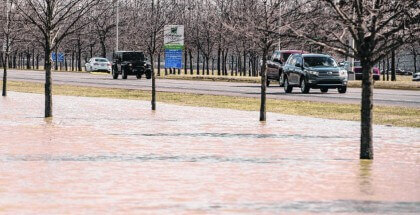An area is said to be waterlogged when the sub-soil water table comes within 1 m below the ground level.
The following problems and solutions for road construction in the water-logged area:

Problems Of Road Construction In Water Logged Area
The rise of the water table causes a capillary rise of water into the subgrade. With this upward flow of water, the injurious salt such as sulphates, chlorides and carbonates of sodium, calcium and magnesium which are present in the water also rises towards the surface.
These salts increase in volume when they crystallize under a suitable condition. The repeated volume changes of salts due to alternate hydration and dehydration leads to breaking of pavement.
Solution Of Road Construction In Water Logged Area
This problem can be resolved by taking variously measured. One of the most effective measures is to depress the water table. This can be achieved by a system of a sub-surface drain. The other alternative is to keep the road embankment sufficiently high.
The bottom of the pavement should be kept at least 1.5 m above the highest water table. Provision of capillary cutoff placed 0.15 m above the ground level can effectively arrest the rise of water.
Capillary cutoff may be provided in the form of a sand blanket, bituminous stabilized soil. The provision of suitable type and grade of Geotextile over the sub-grade also effectively serves as a cutoff for the capillary rise of water and salt migration. The pavement should also be designed adequately for adverse conditions.
Read also: